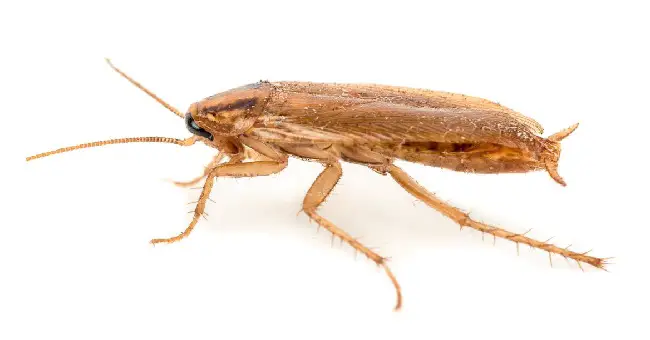Cockroach Facts And Myths

Cockroaches. The mere mention of the word is enough to send shivers down many spines. But how much do you really know about these insects? From ancient history to perplexing behaviors, roaches have sparked numerous myths.
In this article, we’ll be diving deep into the world of cockroaches, debunking myths, and laying out the facts. This is a haven for bug enthusiasts and the simply curious alike.
| Myth | Fact |
|---|---|
| All cockroaches are pests. | Only about 30 types are pests. |
| Cockroaches can withstand a nuclear explosion. | They can tolerate radiation but not a blast. |
| Cockroaches lived with dinosaurs. | True! They are ancient insects. |
| Cockroaches spread diseases and allergies. | This is a fact, especially for asthmatic individuals. |
| Cockroaches can live headless. | True, but only for about a week. |
| All roaches fly. | Not all; some might flutter or glide. |
| Bigger roaches are more problematic. | Size doesn’t determine potential harm. |
| Clean homes are roach-free. | Cleanliness helps, but sealing entry points is crucial. |
| Cockroaches are omnivores. | True; they consume a wide variety of organic matter. |
| Only pesticides can kill roaches. | Natural predators exist, but treatments are needed for infestations. |
| Cockroaches prefer beer. | Some might be attracted to the sugars in beer. |
| Roaches live for decades. | Most species live a few months to a couple of years. |
| Roaches exist everywhere. | They’re found almost everywhere, except Antarctica. |
| Roaches can live long without food. | They can last a month without food but need water within a week. |
| Cockroaches are slow. | They can move up to three miles per hour. |
1. Myth: All cockroaches are pests.
Fact: Of the thousands of cockroach species worldwide, only about 30 types are considered pests. The main culprits in the US are the American, German, Oriental, and Smokey-Brown cockroaches.
2. Myth: Cockroaches can withstand a nuclear explosion.
Fact: Cockroaches can withstand higher radiation levels than humans, but a nuclear explosion would annihilate them. They’re sturdy but not indestructible.
3. Myth: Cockroaches lived during the time of the dinosaurs.
Fact: True! Cockroaches are ancient insects. They’ve been around for at least 200 million years, pre-dating some dinosaurs.
4. Myth: Cockroaches spread diseases and allergies.
Fact: This is not a myth. Cockroaches carry bacteria and their fecal matter, and molted skins can cause allergies, especially in asthmatic individuals.

5. Myth: Cockroaches can live without their heads.
Fact: Bizarre but true! A decapitated roach can live for about a week. However, without water, it would die of dehydration.
6. Myth: All roaches fly.
Fact: Not all roaches are skilled aviators. Some have wings but prefer to crawl, while others might flutter or glide short distances.
7. Myth: The bigger the cockroach, the more problematic it is.
Fact: Size doesn’t determine the potential harm a roach can cause. Even small roaches can spread diseases.
8. Myth: Clean homes are free from cockroaches.
Fact: Cockroaches search for food and water. While a clean house might be less attractive, it’s not immune. Sealing potential entry points is as crucial as cleanliness.
9. Myth: Cockroaches eat everything.
Fact: Almost correct. These omnivores consume a wide variety of organic matter, from food to dead skin cells.
10. Myth: Only pesticides can kill roaches.
Fact: Natural predators like centipedes, spiders, and some wasp species prey on roaches. Still, in infestations, professional treatments are recommended.

11. Myth: Cockroaches have a preference for beer.
Fact: Some species might be attracted to beer, probably due to the sugars it contains.
12. Myth: Roaches live for decades.
Fact: Their lifespan varies, but most species live for a few months to a couple of years.
13. Myth: Roaches exist everywhere.
Fact: Almost everywhere. These insects are hardy and adaptable, but you won’t find them in Antarctica.
14. Myth: Roaches can survive long durations without food.
Fact: Roaches can live for about a month without food but need water within a week.
15. Myth: Cockroaches are slow movers.
Fact: Don’t be fooled! They can sprint up to three miles per hour.
Conclusion
In conclusion, while often seen as household pests, cockroaches are fascinating creatures with a rich history and intriguing behaviors. Whether you’re an insect aficionado or just curious about these six-legged critters, it’s always good to separate the myths from the facts. Understanding more about roaches might not make you love them, but it’ll surely make you respect their resilience and adaptability.

James E. Butkovich, Pest control maven with a knack for eco-friendly & Chemical solutions. Blogger with a mission to make homes pest-free, one post at a time.